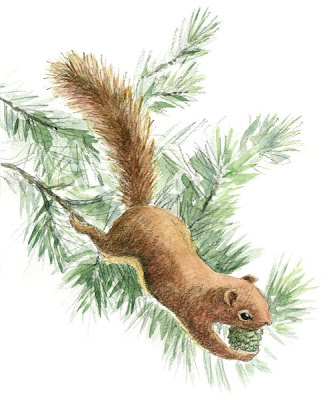
Dale says we three remind him of three great blue herons out here stalking their prey. Dale (my husband), Eleanor (our friend) and I are stalking the grassy banks of the narrow end of Ben Irving Reservoir. Just like the heron, we pause more than we move. We stalk with cameras, not a long, pointed bill.
Indian summer has come, a welcome interlude between the unusual fall rains of mid September and the certain rains that come with late fall and winter. I thought the early rains might have clobbered our insect world; but, no, there are plenty of insects to watch and photograph. It was just a little cool when we arrived – cool for dragonflies, not for me. I love cool, but pay my dues in sweat in order to photograph dragonflies.
It is wonderful out here at the wild end of Ben Irving Reservoir. We’ve got noisy neighbors – about fifty Canada geese seem to be readjusting their pecking order. Lots of honking, gabbling and splashing. One pileated woodpecker calls from the forest to the north, another responds from within the forest to the south. Not to be outdone, a pair of ravens are talking up a storm. Other than the wildlife, we have the place to ourselves.

Eleanor calls to me. She has found an especially colorful garden spider. I arrive just in time to see a small insect fly into the spider’s web. Wow!

The spider pounces onto its victim and in two seconds has it well wrapped. Two seconds! The camera keeps track of the time for me. I even caught a photo of the burst of silk just starting.

The spider just spins that little bug round and round and lets out multiple stands of silk at the same time. It actually looks as though she (?) is wrapping the bug in Saran wrap. Once wrapped the spider takes the bundle to the center of her web, to dine.

Three Pairs of Striped meadowhawks flying in tandem. If you look carefully you can see an egg ready to drop of the tip of the right most dragonfly.
The air is warming rapidly and by late morning striped meadowhawks (small dragonflies) are out in droves. They almost seem to be in a frenzy, finishing their breeding and egg laying before winter comes. A pair of meadowhawks fly by my feet when a bald faced hornet zooms in a grabs one. I call out to Dale and Eleanor and we watch while the hornet decapitates the little dragonfly, clips a couple of its wings off, and then chews the thorax free from the abdomen. The hornet then flies off with the thorax, a heavy load of dragonfly meat. Apparently the whole dragonfly is too much for one hornet. As we watch we realize the bald-faced hornets are taking advantage of an easy food supply. The dragonflies are preoccupied, easy targets for the hornets. The remains of several dragonflies lie scattered on the ground.

But there are plenty of striped meadowhawks. They continue with the business at hand. First the male transfers his sperm from the tip of his abdomen to a pocket just behind this thorax. Once ready he flies about in search of an available female. The pair form a ‘copulation wheel’ -- the male grabs the female behind her head and she brings her abdomen around to retrieve the sperm. Sometimes they fly about in a wheel and sometimes they rest on the ground.
Once fertilized, they usually stay ‘in tandem’ while they fly low over the ground and she drops her eggs one by one. The tiny, light yellow eggs are so small I have to get on my knees to find one. Soon I realize this area is sprinkled with eggs. In spring this area will be underwater, but how do the meadowhawks know that?














